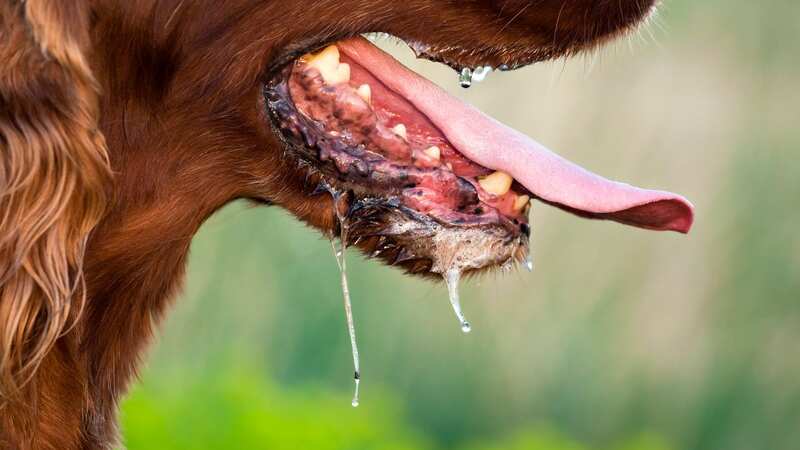Eight tell-tale symptoms of rabies in dogs and what to do if you spot the signs

We typically imagine a rabid dog as barking and drooling - but there are many more tell-tale signs to look out for in your canine friend.
Many usual signs of rabies can also be caused by different illnesses, so it is important to know the full list of rabies symptoms to allow you to better understand what your dog may be struggling with. In serious cases, rabies can be deadly to those exposed to the dog’s saliva.
Which clinical signs of rabies will show in a dog depends on what parts of their brain are affected by the inflammation caused by rabies. The following signs listed by animal website AZ Animals are vital to keep a lookout for, so you can get your dog checked immediately.
1. Abnormal behaviour
Your dog may start acting odd if infected with rabies, including acting increasingly aggressive towards humans or other animals. Occasionally they may try to bite their own bodies. Alternatively, it could lead to the opposite - your dog acting lethargic, shy, or overly timid.
 Girl, 4, mauled to death in dog attack pictured as neighbours hear mum's screams
Girl, 4, mauled to death in dog attack pictured as neighbours hear mum's screams
2. Sensitivity to light, sound and touch
Rabies can cause excessive sensitivity to stimuli such as light, sound, and touch - meaning dogs may retreat to dark places or avoid noisy places. They could react aggressively in the face of these stimuli.
3. Refusal to eat
Dogs with rabies often struggle with swallowing, due to damage to the nerves which control a dog's face and throat. As a result, dogs may refuse to eat or drink - it may appear as if they are in pain due to something they have swallowed or something in the back of their throat.
4. Excessive drooling
One of the more stereotypical symptoms of rabies - which is nonetheless a real symptom - is excessive drooling or foaming at the mouth. This stems from the difficulties with swallowing properly, and results in more drooling or foam than is common with your dog. Note: absence of drooling does not necessarily mean an absence of rabies.
5. Gross motor difficulties
If your dog is struggling to walk properly, or appears disoriented and wobbly, this may be a sign of rabies. It is also possible that your dog suffers with partial paralysis.
6. Altered vocalisation
A dog with rabies might not bark or make noises in its typical way - such as barking when they are hungry or someone is at the door. Strange barks or yelps with no clear reason could be a sign of a rabies infection.
 Vets' warning over deadly Alabama rot after beloved Labrador dies from disease
Vets' warning over deadly Alabama rot after beloved Labrador dies from disease
7. Fever
If your dog comes down with a fever, it may be a sign of rabies. A dog can be affected in different ways, with a low fever, high fever, or no clear change in temperature.
8. Seizures
Seizures can become common in the later stages of rabies, including smaller twitches and conclusions. A seizure can also cause temporary paralysis.
What to do if you suspect rabies exposure
The incubation period - the time between exposure to the infection and when symptoms appear - can be from weeks to months. So if your dog hasn’t been bitten or scratched recently, it is not necessarily proof they are rabies free.
If you suspect your dog may have been exposed to rabies, it is vital to get them checked by a vet. Unfortunately, although rabies can be prevented if a dog is treated very quickly after exposure, there is no treatment for dogs once symptoms appear.
You must be honest about your dog’s vaccination status, providing records if you can - as the protocol for dealing with rabies is dependant on whether they have been vaccinated against the deadly disease.
Read more similar news:
Comments:
comments powered by Disqus

































